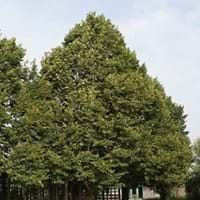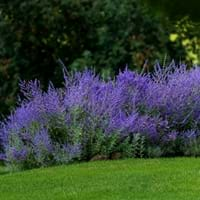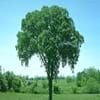Life Span
Perennial
Perennial
Type
Tree
Flowering Plants
Origin
North America, Northeastern United States, Mid-Atlantic United States, Southeastern United States, North-Central United States, Central United States, South-Central United States, Texas, Canada
Hybrid origin
Types
Not Available
Perovskia atriplicifolia LACEY BLUE, Perovskia atriplicifolia ‘Rocketman’
Habitat
gardens, Hardwood forests, Hillside, Tropical rainforest, Woods
Not Available
USDA Hardiness Zone
3-8
4-9
Sunset Zone
1a, 1b, 2a, 2b, 3a, 3b, 4, 5, 6, 7, 8, 9, 10, 11, 12, 13, 14, 15, 16, 17
2a, 2b, 3a, 3b, 4, 5, 6, 7, 8, 9, 10, 11, 12, 13, 14, 15, 16, 17, 18, 19, 20, 21, 22, 23, 24
Habit
Upright/Erect
Clump-Forming
Flower Color
Light Yellow
Lavender, Blue Violet
Flower Color Modifier
Bicolor
Bicolor
Fruit Color
Sandy Brown
Not Available
Leaf Color in Spring
Green
Gray Green, Silver
Leaf Color in Summer
Dark Green
Gray Green, Silver
Leaf Color in Fall
Light Yellow, Brown, Ivory
Gray Green, Silver
Leaf Color in Winter
Not Available
Silver
Leaf Shape
Heart-shaped
Grass like
Plant Season
Spring, Summer, Fall
Spring, Summer, Fall
Sunlight
Full Sun, Partial Sun
Full Sun
Type of Soil
Clay, Loam
Loam, Sand
The pH of Soil
Acidic, Neutral, Alkaline
Neutral, Alkaline
Soil Drainage
Well drained
Well drained
Bloom Time
Early Summer
Summer, Late Summer, Early Fall, Fall
Tolerances
Not Available
Drought, Salt
Where to Plant?
Ground
Container, Ground, Pot
How to Plant?
Seedlings, Stem Planting
Stem Planting
Plant Maintenance
Medium
Low
Watering Requirements
Requires watering in the growing season, Water Deeply, Water twice a day in the initial period
Allow soil to be completely dry in between waterings, Do Not over Water
In Summer
Lots of watering
Lots of watering
In Spring
Moderate
Moderate
In Winter
Average Water
Average Water
Soil pH
Acidic, Neutral, Alkaline
Neutral, Alkaline
Soil Type
Clay, Loam
Loam, Sand
Soil Drainage Capacity
Well drained
Well drained
Sun Exposure
Full Sun, Partial Sun
Full Sun
Pruning
Remove damaged leaves, Remove dead branches, Remove dead leaves
Prune in early spring, Prune regularly
Fertilizers
All-Purpose Liquid Fertilizer
All-Purpose Liquid Fertilizer
Pests and Diseases
Red blotch
Chlorosis, Red blotch
Plant Tolerance
Drought
Drought, Salt
Flowers
Insignificant
Showy
Flower Petal Number
Single
Single
Fragrant Bark/Stem
No
Yes
Foliage Texture
Coarse
Fine
Foliage Sheen
Matte
Matte
Attracts
Not Available
Butterflies
Allergy
Not Available
Skin irritation, Toxic
Aesthetic Uses
Showy Purposes
Landscape Designing
Beauty Benefits
Not Available
Not Available
Environmental Uses
Air purification
Insect Repellent
Medicinal Uses
Bladder Infection, Cold, Cough, Diuretic, Fever, Headache, High blood pressure, Used as a sedative
Treating fever
Part of Plant Used
Whole plant
Flowers, Leaves
Other Uses
Beneficial species for attracting pollinators, Used as Ornamental plant, Used for its medicinal properties, Used in making musical instruments
Culinary use, Oil is used in mosquito repellents, Used as Ornamental plant
Used As Indoor Plant
No
No
Used As Outdoor Plant
Yes
Yes
Garden Design
Shade Trees, Street Trees
Dried Flower / Everlasting, Cutflower, Feature Plant, Foundation, Mixed Border
Botanical Name
TILIA americana
Perovskia atriplicifolia
Common Name
American Basswood
Longin Russian Sage, Russian Sage
In Hindi
अमेरिकी Basswood
Russian Sage
In German
amerikanischen Basswood
russische Sage
In French
tilleul d'Amérique
sabio ruso
In Spanish
tilo americano
Sage ruso
In Greek
Αμερικανός Basswood
Ρωσική Sage
In Portuguese
Basswood americano
Sábio russo
In Polish
Amerykańska Lipa
rosyjski Sage
In Latin
American Basswood
Russian Sage
Phylum
Anthophyta
Magnoliophyta
Class
Magnoliopsida
Magnoliopsida
Family
Tiliaceae
Lamiaceae
Clade
Angiosperms, Eudicots, Rosids
Angiosperms, Asterids, Eudicots
Subfamily
Tilioideae
Not Available
Number of Species
Not Available
Importance of American Basswood and Russian Sage
Want to have the most appropriate plant for your garden? You might want to know the importance of American Basswood and Russian Sage. Basically, these two plants vary in many aspects. Compare American Basswood and Russian Sage as they differ in many characteristics such as their life, care, benefits, facts, etc. Every gardener must at least have the slightest clue about the plants he wants to plant in his garden. Compare their benefits, which differ in many ways like facts and uses. The medicinal use of American Basswood is Bladder Infection, Cold, Cough, Diuretic, Fever, Headache, High blood pressure and Used as a sedative whereas of Russian Sage is Treating fever. American Basswood has beauty benefits as follows: Not Available while Russian Sage has beauty benefits as follows: Not Available.
Compare Facts of American Basswood vs Russian Sage
How to choose the best garden plant for your garden depending upon its facts? Here garden plant comparison will help you to solve this query. Compare the facts of American Basswood vs Russian Sage and know which one to choose. As garden plants have benefits and other uses, allergy is also a major drawback of plants for some people. Allergic reactions of American Basswood are Not Available whereas of Russian Sage have Skin irritation and Toxic respectively. Having a fruit bearing plant in your garden can be a plus point of your garden. American Basswood has no showy fruits and Russian Sage has no showy fruits. Also American Basswood is not flowering and Russian Sage is not flowering . You can compare American Basswood and Russian Sage facts and facts of other plants too.





